Virgin Galactic's big space launch Sunday: Why you should pay attention
A flight 17 years in the making will carry British billionaire Richard Branson and a full crew from the New Mexico desert to the edge of space.

Virgin Galactic
Eric Mack
July 7, 2021
Shortly after sunrise this Sunday, July 11, Virgin Galactic's SpaceshipTwo Unity and the carrier aircraft VMS Eve will take off from a lonely runway amid one of the most desolate stretches of desert in North America. A full crew will be aboard the suborbital spaceplane for the first time, including two pilots, three employees and the company's billionaire founder, Richard Branson.
One of the crew members, Virgin's chief astronaut instructor, Beth Moses, will be making the trip for the second time. But the star of the show will be the 70-year-old Branson, who has invested over 16 years and more than $1 billion to finally make the short trip to the edge of space, experience weightlessness and gaze upon Earth as only a privileged few hundred other humans have.
"I always envisioned as a kid that a spaceship should look like this," Branson told NBC News. "I just thought that's how you should fly to space."
But much more is at stake Sunday than just the high-flying dreams of one wealthy
More than a million New Mexico taxpayers, including me, have invested nearly a quarter billion dollars to build Virgin Galactic's home at Spaceport America in the hopes its anchor tenant will create a new industry in the state.
"We couldn't be more excited to finally share this groundbreaking moment with the world," Gov. Michelle Lujan Grisham said in a statement. "The dawn of space tourism is happening right here."
There are also bragging rights to consider, as Branson has scheduled his flight to take place nine days before fellow billionaire Jeff Bezos rides one of his Blue Origin rockets to space for the first time on July 20. Branson has insisted there is no race between himself and Bezos, but the timing is difficult to discount.
Investors will be closely monitoring the test program Branson is participating in Sunday. Virgin Galactic is a publicly traded company worth over $11 billion as of July 6. And of course there are the company's 700 paying customers, who have waited patiently in line, ready to pay over $200,000 each for the ride.
Beyond that, there's a broader vision of easy access to space (or perhaps a planetary escape hatch, depending on your disposition) for humanity. Our species has been sending handfuls of humans to space for decades, but the rate of growth of the larger program of human spaceflight has been more or less stagnant for a generation or two now. And the possibility of regular civilians making it to space has remained at virtually zero, save for a few who managed to secure a seat by possessing the highest levels of either political or financial privilege.
Richard Branson and Virgin Galactic: See the space dream come to life See all photos
+12 More
Now, with Virgin Galactic, Blue Origin and also Elon Musk's SpaceX, we are finally on the precipice of moving from quirky one-off space tourists to regular commercial trips to microgravity, orbit and maybe even the moon, Mars and beyond, with some hyperfast point-to-point trips around the globe in between.
"I truly believe that space belongs to all of us," Branson says. "Virgin Galactic stands at the vanguard of a new commercial space industry, which is set to open space to humankind."
Sunday's flight may still be just one rich guy and his employees taking a very high-altitude joyride that will probably be over in under 90 minutes. But it also represents more than that, and it's been a very long road to reach this point.
Dead Man's Route
One of the longest and most arduous roads in history was the Camino Real de Tierra Adentro that linked Mexico City with Santa Fe and other points for nearly three centuries, between 1598 and the late 19th century. The most feared stretch of the over 1,500-mile (2,414-kilometer) journey was the Jornada del Muerto, or Dead Man's Route, north of Las Cruces. This flat, dry and desolate basin is 100 miles long and has been home to basically nothing forever, except now it hosts Spaceport America and Virgin Galactic's commercial spaceflight operations.
More specifically, you'll find New Mexico's publicly funded commercial spaceport near a spot that was once called Aleman. The name (as well as the name of the Jornada del Muerto) comes from a German fugitive who tried crossing the desert in the dry season in 1670. His remains where found, after being picked over and scattered by vultures, not far from the spot where Branson and crew will take off Sunday.
Despite the region's inability to produce much more than suffering over its history, hope somehow still springs from this dusty land. Just as generations traversed it for centuries seeking opportunity and fortune, Virgin Galactic has traveled its own tortured path, all the while keeping the faith that this empty yet quietly beautiful desert valley could be its gateway to a brilliant future.
Virgin Galactic was founded in 2004, and a little over a year later a deal was struck with New Mexico to base the company's commercial flights at the new spaceport, then expected to be completed by 2010. Everything seemed to be off and running. At one point, Branson predicted that Virgin could launch as many as 50,000 passengers to the edge of space in its first decade of operations, by about 2020.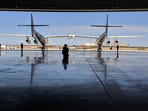
Virgin Galactic aims to eventually launch thousands of passengers per year from Spaceport America. Eric Mack
The Spaceport officially opened in October 2011, but development of Virgin Galactic's unique horizontal launch system was slow-going. Unlike SpaceX or Blue Origin, which put passenger capsules atop vertically launched rockets, Virgin uses a custom carrier aircraft called WhiteKnightTwo that totes SpaceShipTwo, which is essentially a rocket-powered spaceplane, to an elevation where it is released to then ignite and blast its way toward space.
The company was still working to get the required speed and altitude out of SpaceShipTwo when a fatal mishap occurred during a test flight in California in 2014. SpaceShipTwo Enterprise broke apart shortly after ignition of its engine, leaving one co-pilot dead and another seriously injured. More delays and an investigation ensued, but Virgin Galactic was able to resume its test flights with a new SpaceShipTwo, the VSS Unity, by December 2016.
Now, with Virgin Galactic, Blue Origin and also Elon Musk's SpaceX, we are finally on the precipice of moving from quirky one-off space tourists to regular commercial trips to microgravity, orbit and maybe even the moon, Mars and beyond, with some hyperfast point-to-point trips around the globe in between.
"I truly believe that space belongs to all of us," Branson says. "Virgin Galactic stands at the vanguard of a new commercial space industry, which is set to open space to humankind."
Sunday's flight may still be just one rich guy and his employees taking a very high-altitude joyride that will probably be over in under 90 minutes. But it also represents more than that, and it's been a very long road to reach this point.
Dead Man's Route
One of the longest and most arduous roads in history was the Camino Real de Tierra Adentro that linked Mexico City with Santa Fe and other points for nearly three centuries, between 1598 and the late 19th century. The most feared stretch of the over 1,500-mile (2,414-kilometer) journey was the Jornada del Muerto, or Dead Man's Route, north of Las Cruces. This flat, dry and desolate basin is 100 miles long and has been home to basically nothing forever, except now it hosts Spaceport America and Virgin Galactic's commercial spaceflight operations.
More specifically, you'll find New Mexico's publicly funded commercial spaceport near a spot that was once called Aleman. The name (as well as the name of the Jornada del Muerto) comes from a German fugitive who tried crossing the desert in the dry season in 1670. His remains where found, after being picked over and scattered by vultures, not far from the spot where Branson and crew will take off Sunday.
Despite the region's inability to produce much more than suffering over its history, hope somehow still springs from this dusty land. Just as generations traversed it for centuries seeking opportunity and fortune, Virgin Galactic has traveled its own tortured path, all the while keeping the faith that this empty yet quietly beautiful desert valley could be its gateway to a brilliant future.
Virgin Galactic was founded in 2004, and a little over a year later a deal was struck with New Mexico to base the company's commercial flights at the new spaceport, then expected to be completed by 2010. Everything seemed to be off and running. At one point, Branson predicted that Virgin could launch as many as 50,000 passengers to the edge of space in its first decade of operations, by about 2020.

Virgin Galactic aims to eventually launch thousands of passengers per year from Spaceport America. Eric Mack
The Spaceport officially opened in October 2011, but development of Virgin Galactic's unique horizontal launch system was slow-going. Unlike SpaceX or Blue Origin, which put passenger capsules atop vertically launched rockets, Virgin uses a custom carrier aircraft called WhiteKnightTwo that totes SpaceShipTwo, which is essentially a rocket-powered spaceplane, to an elevation where it is released to then ignite and blast its way toward space.
The company was still working to get the required speed and altitude out of SpaceShipTwo when a fatal mishap occurred during a test flight in California in 2014. SpaceShipTwo Enterprise broke apart shortly after ignition of its engine, leaving one co-pilot dead and another seriously injured. More delays and an investigation ensued, but Virgin Galactic was able to resume its test flights with a new SpaceShipTwo, the VSS Unity, by December 2016.
This is only a test
The last five years for Virgin Galactic have been much happier than the previous half decade, even with last year essentially lost to the COVID-19 pandemic. VSS Unity has outperformed its predecessor, carrying Moses as the first person in the passenger cabin in 2019. The company unveiled its astronaut lounge at Spaceport America later that year and also started trading on the New York Stock Exchange.
A series of unveilings -- of its flight suit, passenger cabin and the next-generation SpaceShip III joining the fleet -- have all led up to this Sunday. Branson and crew will take off from the center of the Dead Man's Route, using a forgotten section of dry earth to go places that centuries of miserable visitors to the same valley could scarcely dream of.
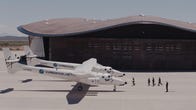
Watch this: First look inside Virgin Galactic's space passenger terminal
1:26
With all the hype around Branson's first trip to space, it's easy to forget that this is still technically a test flight. His role on the mission is ostensibly "to evaluate the private astronaut experience." After Unity returns to the ground, the company is still planning at least two more test flights before it will consider putting paying customers on board, likely no sooner than 2022 (although the company does have the FAA approval to do so already).
The details of Sunday's flight remain about as scarce as a watering hole between Las Cruces and Truth or Consequences, but we know that liftoff of WhiteKnightTwo is expected about 7 a.m. local time (6 a.m. PT). Based on previous test flights, it will be at least 30 minutes before the carrier craft reaches the altitude where VSS Unity detaches and ignites its rocket engine.
After blasting to an altitude of about 56 miles (90 kilometers) and floating around in microgravity for a bit, the spacecraft will return for a landing at Spaceport America, probably no more than 90 minutes after takeoff.
How to watch Richard Branson's Virgin Galactic flight
Virgin Galactic will have a livestream of the mission, dubbed Unity 22, and you can watch it right here. I will also be on the ground at Spaceport America all day Sunday, so you can also get updates and some behind-the-scenes details by following me on Twitter and Instagram @EricCMack.
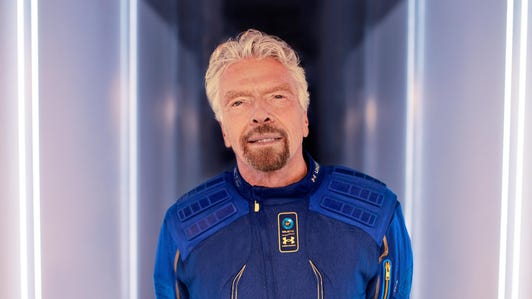
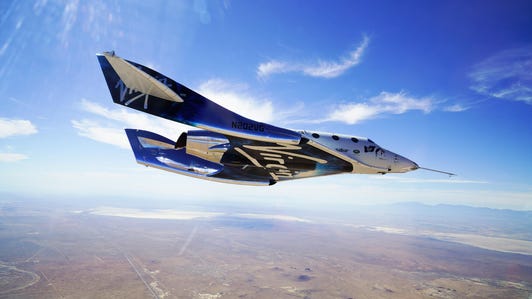
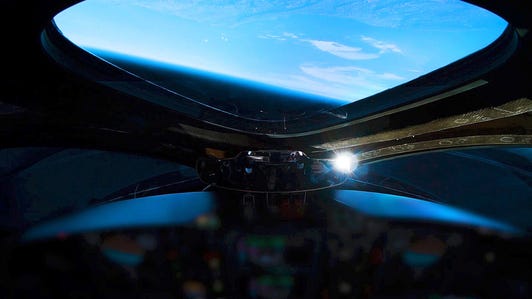
No comments:
Post a Comment